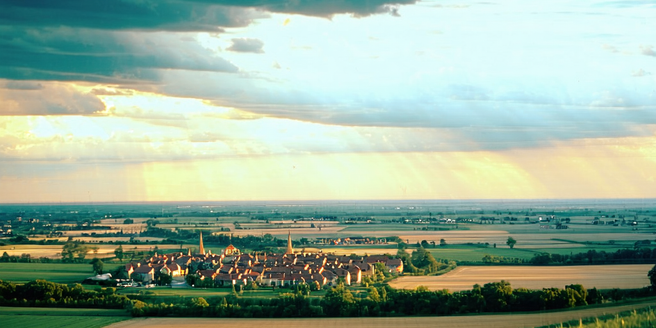
Understanding Renaissance Society and Climate
Renaissance society was deeply intertwined with the natural environment, and climate played a significant role in shaping agriculture, travel, and daily life. This period witnessed a growing curiosity about the world, leading scholars to study patterns and seasonal changes. Renaissance thinkers began to document their observations, laying the groundwork for systematic weather study. At this time, climate was seen as a divine element, guiding human fate and societal developments. The increasing knowledge of the natural world and climate allowed people to better plan agricultural activities, crucial for sustaining the society reliant on farming. Thus, understanding weather was not only a quest for knowledge but also a practical necessity. This era marked a shift from viewing weather as solely supernatural, moving towards rational explanations and predictions that influenced societal structures and planning.
Methods of Weather Forecasting in the Renaissance
During the Renaissance, weather forecasting was largely based on observational techniques, folklore, and astrology. Scholars and farmers alike relied on traditional wisdom and empirical observations, such as cloud formations, wind direction, and animal behavior, to predict weather conditions. Manuals called ‘prognostications’ compiled these observations with astrological data to forecast weather patterns. Astrologers believed that planetary positions influenced terrestrial events, including weather. While lacking modern scientific instruments, these methods represented the period’s blend of empirical observation and mystical interpretation. Such practices reflected the Renaissance spirit of inquiry and synthesis of ancient knowledge. These rudimentary techniques, despite their limitations, allowed people to anticipate weather changes and prepare accordingly, showcasing an evolving understanding of atmospheric phenomena and blending of science with cultural beliefs. The era paved the way for systematic meteorological studies.
Influence of Astronomy on Weather Predictions
Astronomy significantly influenced weather predictions during the Renaissance. This era marked a burgeoning interest in celestial bodies and their impacts on Earth’s climate, driven by the belief that planetary alignments affected terrestrial events. Astrologers, who prided themselves as interpreters of celestial omens, suggested that the positions of stars and planets could predict weather patterns. This celestial perspective was intertwined with early meteorological efforts, where astrological charts were used to forecast climatic conditions. Patrons and scholars funded astronomical studies, advocating that understanding the heavens enhanced terrestrial knowledge, including weather prediction. Although modern science refutes astrological influences on weather, these practices highlighted the Renaissance’s holistic view of the interconnectedness of the universe. Astronomy’s role in weather prediction demonstrated early attempts to rationalize natural events through a blend of observation and belief, marking a crucial step towards scientific inquiry.
Prominent Figures in Renaissance Meteorology
The Renaissance era saw several figures pioneering early meteorological thought. One of the most influential was Leonardo da Vinci, whose detailed observations of clouds and water cycles advanced understanding of atmospheric processes. Another key figure was Galileo Galilei, who invented the thermoscope, an early predecessor of the thermometer, instrumental in studying temperature variations. Additionally, the mathematician and astronomer Tycho Brahe’s meticulous star catalogs and planetary observations indirectly facilitated weather studies by enhancing celestial knowledge. Their contributions, driven by curiosity and scientific rigor, provided the foundation for future meteorological exploration. These figures epitomized the Renaissance spirit of inquiry, challenging traditional views and expanding the frontier of knowledge. Their work helped transition meteorology from mystical interpretations to empirical observation and laid groundwork for continuous weather research, greatly influencing how society understood and interacted with natural phenomena.
Limitations of Renaissance Weather Predictions
While Renaissance developments in weather prediction marked significant progress, there were inherent limitations. The lack of advanced scientific instruments meant reliance on observation, folklore, and astrology, which did not always yield accurate results. Predictions were mainly based on astronomical data and natural signs, resulting in interpretations that often mingled empirical observations with superstition. Furthermore, the understanding of atmospheric processes was rudimentary, with no knowledge of pressure systems or the jet stream, crucial for accurate forecasting. Social and technological constraints also limited widespread dissemination of meteorological knowledge, confining it to scholarly circles. These limitations reflect the transitional nature of Renaissance science, bridging medieval beliefs and modern scientific methods. Despite these challenges, the era laid important groundwork, highlighting the need for systematic study and improved methodologies, and spurred curiosity that fueled later advancements in meteorology.
Legacy of Renaissance Methods in Modern Meteorology
The meteorological advancements of the Renaissance, although primitive by today’s standards, laid important foundations for modern meteorology. This era marked the transition from superstition and religious interpretations of weather to empirical observation and analysis. Instruments like Galileo’s thermoscope hinted at the need for precise measurement tools, leading to inventions crucial for meteorology, such as the barometer and thermometer. The integration of astronomy with weather prediction demonstrated an early understanding of environmental systems, encouraging holistic approaches in scientific inquiry. Renaissance scholars’ emphasis on observation and documentation set standards for data collection, essential for contemporary weather forecasting. Their legacy endures in the principles of observational science and the pursuit of understanding complex natural phenomena. By melding art and science, Renaissance methods paved the way for a methodical approach to studying weather, influencing how modern meteorologists model and predict climate patterns.
